Grow Asparagus Indoors? Absolutely! Imagine harvesting fresh, tender asparagus spears right from your kitchen, even in the dead of winter. It sounds like a gardener’s dream, right? Well, it doesn’t have to be just a dream. This DIY guide will unlock the secrets to successfully cultivating this delicious vegetable within the cozy confines of your home.
Asparagus has been enjoyed for centuries, with evidence of its cultivation dating back to ancient Rome. The Romans prized it for its culinary and medicinal properties. Today, we still appreciate its unique flavor and nutritional benefits. But let’s face it, traditionally, growing asparagus requires a dedicated garden bed and a whole lot of patience. It can take years for a newly planted asparagus crown to mature enough for harvesting. That’s where this indoor trick comes in!
Many of us are limited by space, climate, or simply the desire for year-round fresh produce. That’s why learning how to grow asparagus indoors is so valuable. I’m going to show you how to bypass the usual outdoor challenges and enjoy a continuous supply of this gourmet vegetable. Think of the money you’ll save at the grocery store, and the satisfaction of knowing you grew it yourself! Plus, it’s a fantastic conversation starter. So, grab your gardening gloves, and let’s get started on this exciting indoor gardening adventure!
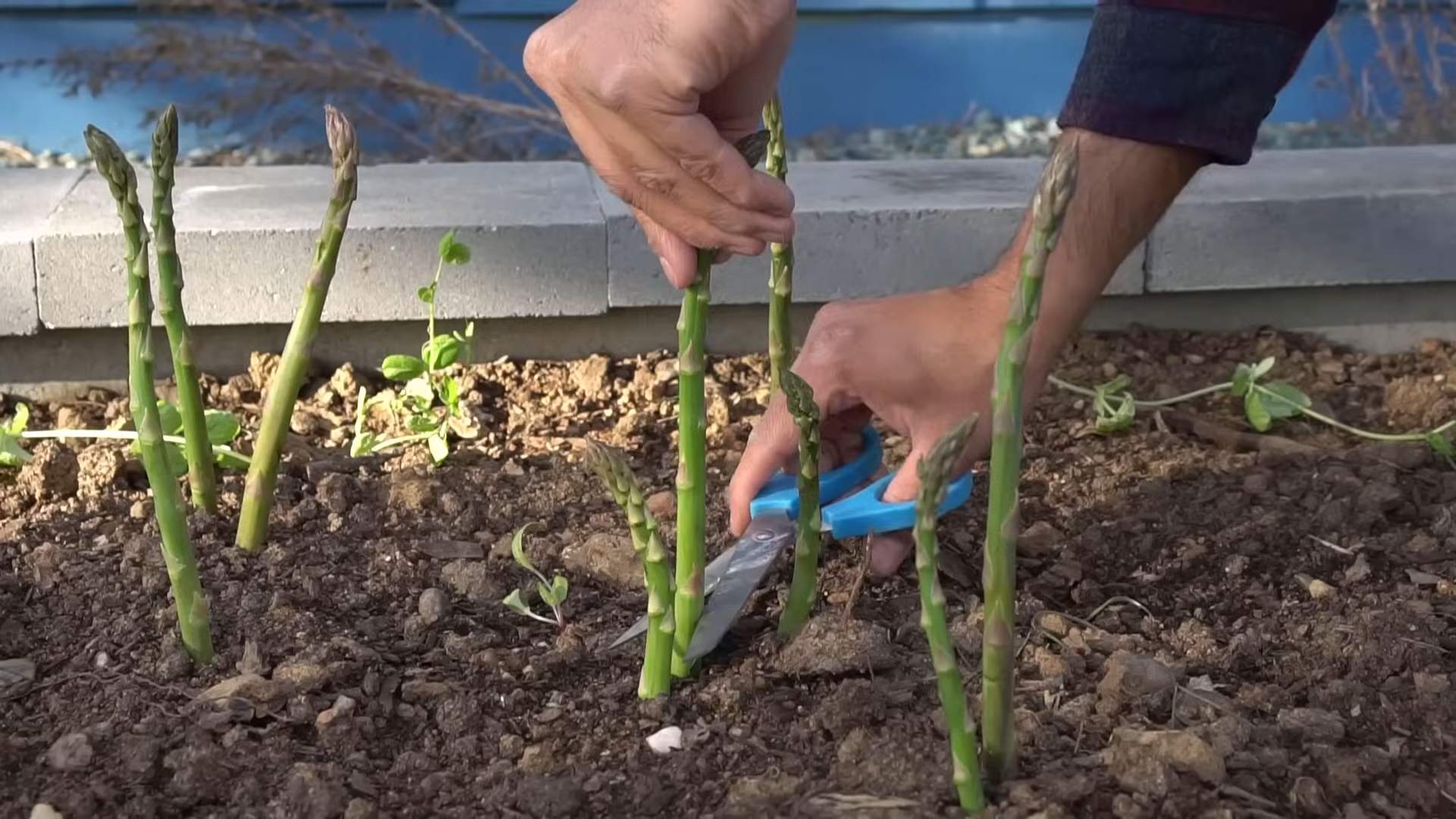
Growing Asparagus Indoors: A Complete DIY Guide
Okay, so you want to grow asparagus indoors? Awesome! It might seem a little daunting, but trust me, with a little patience and the right setup, you can absolutely enjoy fresh, homegrown asparagus even without a sprawling garden. I’ve done it, and I’m here to share everything I learned along the way. Let’s get started!
Choosing the Right Asparagus Variety
First things first, not all asparagus varieties are created equal, especially when it comes to indoor growing. We need to pick a variety that’s known for being relatively compact and productive.
* ‘Jersey Knight’: This is a popular choice for its high yield and disease resistance. It’s a male variety, which means it doesn’t produce seeds, so all its energy goes into spear production.
* ‘Purple Passion’: If you’re looking for something a little different, ‘Purple Passion’ offers beautiful purple spears that turn green when cooked. It’s also known for being sweeter than green varieties.
* ‘Apollo’: Another great option, ‘Apollo’ is known for its early production and good spear quality.
Setting Up Your Indoor Asparagus Garden
Asparagus needs a specific environment to thrive indoors. Think bright light, well-draining soil, and plenty of space for those roots to spread.
* Lighting: Asparagus needs at least 6-8 hours of direct sunlight per day. If you don’t have a sunny window, you’ll need to invest in grow lights. Full-spectrum LED grow lights are your best bet.
* Container: Choose a large container, at least 12 inches deep and 12 inches wide. Asparagus roots grow deep, so the bigger the better. A 20-gallon container is ideal for a few plants.
* Soil: Asparagus needs well-draining soil that’s rich in organic matter. A mix of potting soil, compost, and perlite or vermiculite works well.
* Temperature: Asparagus prefers temperatures between 65-75°F (18-24°C) during the day and slightly cooler temperatures at night.
* Humidity: While not as crucial as other factors, maintaining moderate humidity levels (around 40-50%) will help your asparagus thrive. You can achieve this by using a humidifier or placing a tray of water near your plants.
Planting Your Asparagus Crowns
Now for the fun part – planting! You can start asparagus from seed, but it takes a long time (around three years) to get a harvest. Starting with crowns (one-year-old plants) is much faster.
1. Prepare the Container: Fill your container with the soil mixture, leaving a few inches of space at the top.
2. Create a Mound: Create a small mound of soil in the center of the container.
3. Position the Crown: Place the asparagus crown on top of the mound, spreading the roots out around it.
4. Cover the Crown: Gently cover the crown with soil, leaving the top of the crown (the bud) just barely exposed.
5. Water Thoroughly: Water the soil thoroughly until water drains out of the bottom of the container.
Caring for Your Indoor Asparagus
Asparagus needs consistent care to produce a good harvest. Here’s what you need to do:
* Watering: Water regularly, keeping the soil consistently moist but not soggy. Allow the top inch of soil to dry out between waterings.
* Fertilizing: Feed your asparagus plants every 2-3 weeks with a balanced liquid fertilizer. Follow the instructions on the fertilizer label.
* Pruning: In the fall, after the ferns have turned yellow and died back, cut them back to the soil level. This allows the plant to rest and store energy for the next growing season.
* Pest Control: Keep an eye out for common pests like aphids and spider mites. Treat infestations with insecticidal soap or neem oil.
Harvesting Your Asparagus
Patience is key! You shouldn’t harvest any spears in the first year after planting. This allows the plant to establish itself and build up its energy reserves. In the second year, you can harvest a few spears, but only for a short period (around 2-3 weeks). In the third year and beyond, you can harvest for a longer period (around 6-8 weeks).
1. Check for Harvestable Spears: Look for spears that are at least 6-8 inches tall and about as thick as your finger.
2. Cut the Spears: Use a sharp knife to cut the spears at soil level.
3. Harvest Regularly: Harvest spears every day or two during the harvest season to encourage continued production.
Troubleshooting Common Problems
Even with the best care, you might encounter some problems along the way. Here are a few common issues and how to fix them:
* Yellowing Ferns: This could be a sign of overwatering, underwatering, or nutrient deficiency. Check the soil moisture and adjust your watering accordingly. Fertilize regularly to ensure your plants are getting enough nutrients.
* Thin Spears: This could be a sign that your plants aren’t getting enough light or nutrients. Make sure they’re getting at least 6-8 hours of direct sunlight per day or supplement with grow lights. Fertilize regularly to provide the necessary nutrients.
* Pests: Inspect your plants regularly for pests like aphids and spider mites. Treat infestations with insecticidal soap or neem oil.
Step-by-Step Instructions: A Detailed Breakdown
Let’s break down the whole process into numbered steps for extra clarity:
1. Choose Your Asparagus Variety: Select a variety that’s well-suited for indoor growing, such as ‘Jersey Knight,’ ‘Purple Passion,’ or ‘Apollo.’
2. Gather Your Supplies: You’ll need a large container (at least 12 inches deep and wide), potting soil, compost, perlite or vermiculite, asparagus crowns, a watering can, and fertilizer.
3. Prepare the Container: Mix the potting soil, compost, and perlite or vermiculite in a ratio of 2:1:1. Fill the container with the mixture, leaving a few inches of space at the top.
4. Create a Mound: Create a small mound of soil in the center of the container.
5. Position the Crown: Place the asparagus crown on top of the mound, spreading the roots out around it.
6. Cover the Crown: Gently cover the crown with soil, leaving the top of the crown (the bud) just barely exposed.
7. Water Thoroughly: Water the soil thoroughly until water drains out of the bottom of the container.
8. Provide Adequate Light: Place the container in a location that receives at least 6-8 hours of direct sunlight per day. If you don’t have a sunny window, use grow lights.
9. Water Regularly: Water regularly, keeping the soil consistently moist but not soggy. Allow the top inch of soil to dry out between waterings.
10. Fertilize Every 2-3 Weeks: Feed your asparagus plants every 2-3 weeks with a balanced liquid fertilizer. Follow the instructions on the fertilizer label.
11. Monitor for Pests: Inspect your plants regularly for pests like aphids and spider mites. Treat infestations with insecticidal soap or neem oil.
12. Prune in the Fall: In the fall, after the ferns have turned yellow and died back, cut them back to the soil level.
13. Be Patient: Don’t harvest any spears in the first year after planting. In the second year, harvest a few spears for a short period. In the third year and beyond, you can harvest for a longer period.
14. Harvest Regularly During Harvest Season: Look for spears that are at least 6-8 inches tall and about as thick as your finger. Use a sharp knife to cut the spears at soil level. Harvest spears every day or two during the harvest season.
Tips for Success
Here are a few extra tips to help you succeed with your indoor asparagus garden:
* Rotate Your Plants: If you’re using grow lights, rotate your plants regularly to ensure they receive even light exposure.
* Provide Support: As the ferns grow taller, they may need some support. You can use stakes or a trellis to keep them from falling over.
* Consider a Dormancy Period: Asparagus needs a period of dormancy to rest and recharge. In the fall, after the ferns have died back, you can move your plants to a cooler location (around 40-50°F) for a few weeks. This will help them produce more spears in the next growing season.
* Don’t Overharvest: It’s tempting to harvest all the spears you
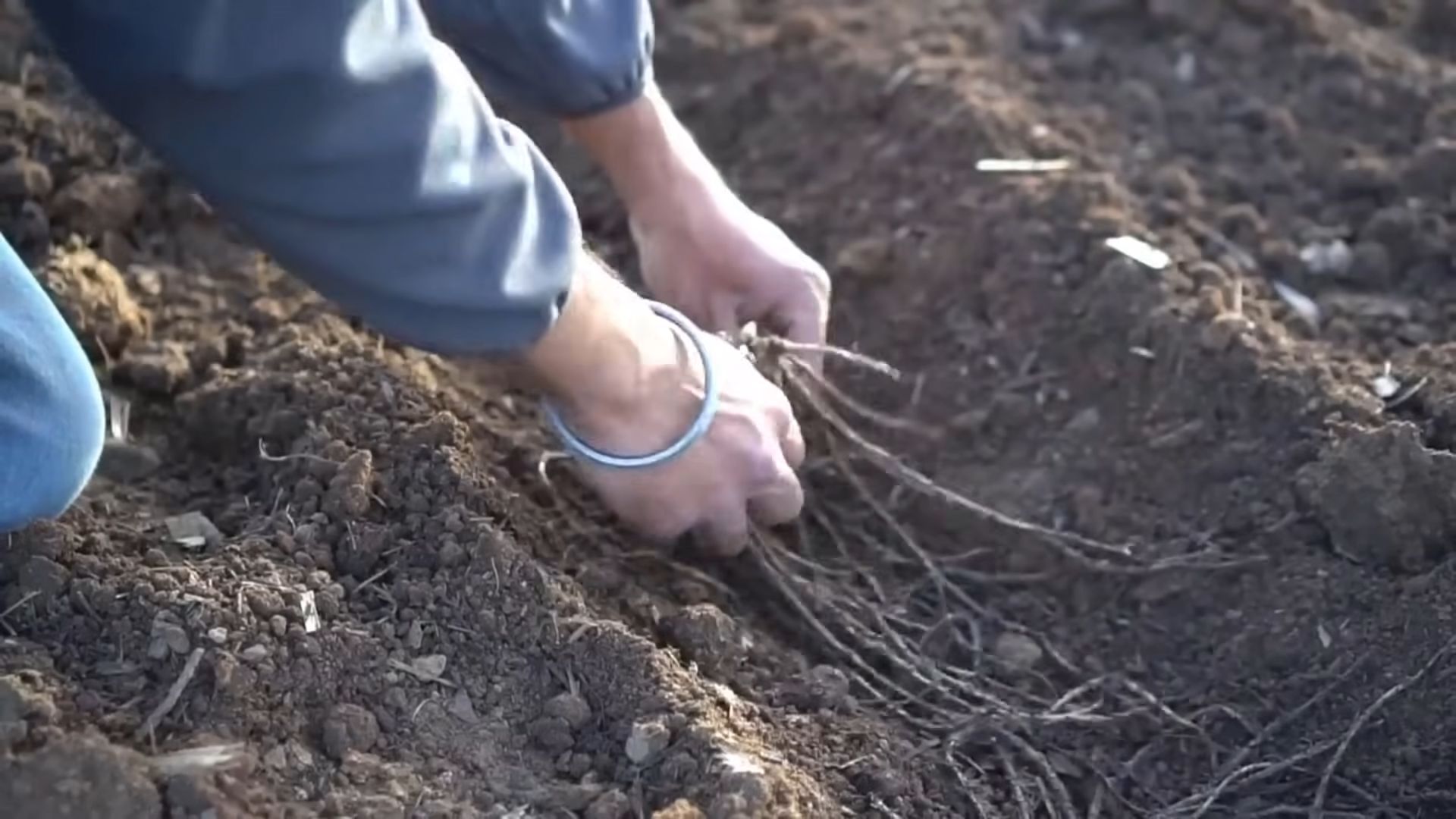
Conclusion
So, there you have it! Growing asparagus indoors might seem like a challenge reserved for seasoned gardeners, but with a little patience and the right approach, you can absolutely enjoy the fresh, vibrant taste of homegrown asparagus, even without a sprawling outdoor garden. This DIY trick isn’t just about saving money; it’s about connecting with your food, understanding the growth cycle, and experiencing the immense satisfaction of nurturing something from seed to plate.
Why is this a must-try? Because store-bought asparagus simply can’t compare to the flavor and freshness of what you can cultivate yourself. Imagine snapping off tender spears, still warm from the grow lights, and adding them to your favorite dishes. Think of the bragging rights you’ll earn when you tell your friends you grew your own asparagus indoors! Beyond the taste, growing asparagus indoors offers a unique opportunity to learn about plant care, experiment with different growing techniques, and create a sustainable food source within your own home.
But don’t stop there! Once you’ve mastered the basics, explore different varieties of asparagus. ‘Jersey Knight’ is a popular choice for its high yields and disease resistance, while ‘Purple Passion’ offers a beautiful color and sweeter flavor. You can also experiment with different growing mediums, such as coco coir or perlite, to see what works best for your setup. Consider adding companion plants like basil or parsley to your indoor garden to deter pests and enhance the flavor of your asparagus.
Ready to embark on your indoor asparagus adventure? We encourage you to give this DIY trick a try. Start small, be patient, and don’t be afraid to experiment. Remember to document your progress, take photos, and share your experiences with us in the comments below. We’d love to hear about your successes, your challenges, and any tips you discover along the way. Let’s build a community of indoor asparagus enthusiasts and prove that fresh, homegrown produce is accessible to everyone, regardless of their outdoor space. Growing asparagus indoors is not just a hobby; it’s a rewarding experience that connects you to nature and provides you with delicious, healthy food. So, grab your seeds, gather your supplies, and get ready to enjoy the fruits (or rather, the spears) of your labor!
FAQ: Growing Asparagus Indoors
What are the best asparagus varieties to grow indoors?
While many asparagus varieties can be grown indoors, some are better suited for container gardening than others. ‘Jersey Knight’ is a popular choice due to its high yield, disease resistance, and adaptability to container growing. ‘Purple Passion’ is another excellent option, offering a unique purple color and a sweeter, milder flavor. ‘Mary Washington’ is a classic variety that is also known to perform well in containers. When selecting your variety, consider factors such as flavor preference, disease resistance, and space constraints. Remember that asparagus needs a large container, so choose a variety that won’t outgrow its space too quickly.
How much light does indoor asparagus need?
Asparagus requires a significant amount of light to thrive, especially when grown indoors. Aim for at least 6-8 hours of direct sunlight per day. If you don’t have access to a sunny window, you’ll need to supplement with grow lights. LED grow lights are an energy-efficient and effective option. Position the lights about 6-12 inches above the asparagus ferns and adjust as needed to prevent burning. Monitor your plants closely for signs of insufficient light, such as leggy growth or pale leaves.
What type of soil is best for growing asparagus in containers?
Asparagus prefers well-draining soil that is rich in organic matter. A good potting mix for asparagus should consist of a combination of compost, peat moss, and perlite or vermiculite. This will provide the necessary nutrients, drainage, and aeration for healthy root growth. Avoid using garden soil, as it can be too heavy and compact, leading to root rot. Before planting, amend the soil with a slow-release fertilizer to provide a steady supply of nutrients.
How often should I water my indoor asparagus?
Water your asparagus regularly, keeping the soil consistently moist but not waterlogged. Check the soil moisture level by sticking your finger about an inch into the soil. If it feels dry, it’s time to water. Water deeply, allowing the excess water to drain out of the bottom of the container. Avoid overwatering, as this can lead to root rot. During the dormant season (fall and winter), reduce watering frequency.
How long does it take to harvest asparagus after planting?
Asparagus typically takes 2-3 years to mature enough for harvesting. During the first year, focus on establishing a strong root system. In the second year, you can harvest a few spears, but limit the harvest to a few weeks. In the third year and beyond, you can harvest more heavily, but always leave some spears to fern out and replenish the plant’s energy reserves.
How do I know when my asparagus is ready to harvest?
Asparagus spears are ready to harvest when they are about 6-8 inches tall and the tips are still tightly closed. Use a sharp knife to cut the spears at ground level. Avoid pulling the spears, as this can damage the crown. Harvest asparagus in the morning, when the spears are at their most tender.
How do I care for my asparagus plants during the dormant season?
In the fall, the asparagus ferns will turn yellow and brown. Once they have completely dried out, cut them back to ground level. This will help to prevent disease and pests from overwintering. Reduce watering frequency during the dormant season. You can also apply a layer of mulch to protect the crown from freezing temperatures.
What are some common pests and diseases that affect indoor asparagus?
Common pests that can affect indoor asparagus include aphids, spider mites, and asparagus beetles. Inspect your plants regularly for signs of infestation and take action promptly. You can control aphids and spider mites with insecticidal soap or neem oil. Asparagus beetles can be handpicked or controlled with pyrethrin-based insecticides. Common diseases that can affect indoor asparagus include crown rot and rust. Prevent these diseases by providing good drainage, avoiding overwatering, and ensuring good air circulation.
Can I grow asparagus from seed indoors?
Yes, you can grow asparagus from seed indoors. Start the seeds indoors 12-14 weeks before the last expected frost. Soak the seeds in water for 24 hours before planting to improve germination. Sow the seeds in a seed-starting mix and keep them moist. Once the seedlings have developed several sets of true leaves, transplant them into larger containers.
How big of a container do I need for growing asparagus indoors?
Asparagus needs a large container to accommodate its extensive root system. A container that is at least 12 inches deep and 12 inches wide is recommended. As the plant grows, you may need to transplant it into a larger container. Choose a container that has drainage holes to prevent waterlogging.


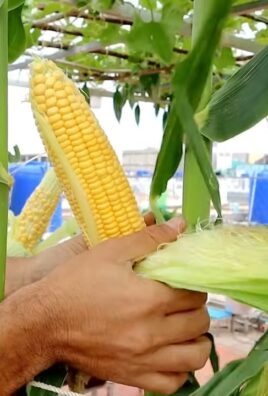
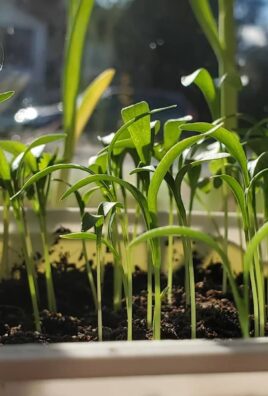
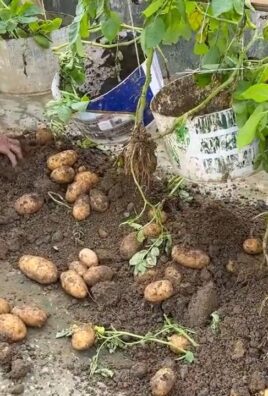
Leave a Comment